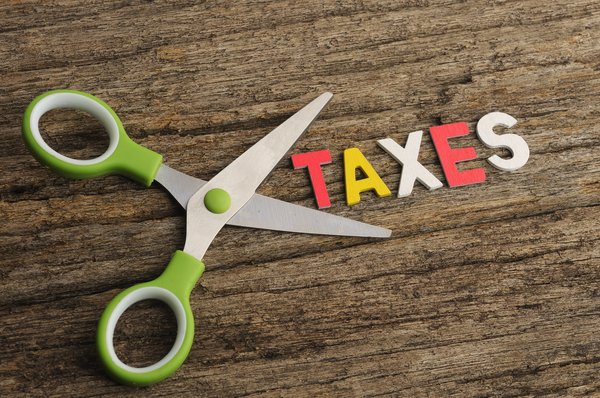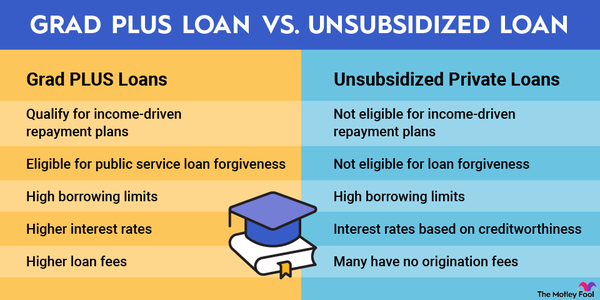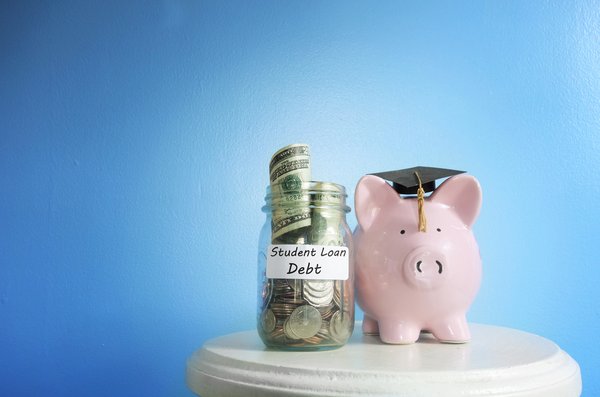What is a Parent PLUS Loan?
What is a Parent PLUS Loan?
The Parent Loan for Undergraduate Students (PLUS) is a loan that eligible parents can take out to help pay for the undergraduate education of a dependent student. The Direct PLUS Loan or Parent PLUS Loan can help pay for college educational expenses not covered by other financial aid, including student loans where the student is the borrower.

How do they work?
How do Parent PLUS Loans work?
Parent PLUS Loans help pay for educational expenses not covered by other forms of financial aid, like grants, scholarships, and student loans. The first step in requesting a Parent PLUS Loan is completing the Free Application for Federal Student Aid (FAFSA). In addition, the parent must complete the Federal Direct PLUS Loan Master Promissory Note (MPN). The process for completing the MPN will vary by school, so parents should check with the financial aid office of their child's school for more information. The MPN will explain the terms and conditions of the parent's PLUS loan. It's the parents' legal agreement to repay their loan. They can often use a single MPN for all loans taken out to pay for their child's education over several years.
Parent PLUS Loans don't have a maximum borrowing limit. However, parents cannot borrow more than their child's education costs after subtracting any other financial aid they receive. Their child's school will determine how much a parent can borrow.
Parent PLUS Loans charge a fixed interest rate for the life of the loan. The interest rate is determined annually for loans made between July 1 and June 30 of the following year. Each new PLUS Loan for subsequent school years can have a different fixed interest rate.
In addition, Parent PLUS Loans have a loan fee. The Department of Education deducts the loan fee (a percentage of the loan amount) before the borrower receives any loan money. The loan fee reduces the amount of money the borrower will receive to help fund their child's education.
The child's school will receive the money from a Parent PLUS Loan in at least two installments, which will help cover their educational expenses. Any remaining funds will be repaid directly to the parent or their child if the parent authorizes the school to pay them directly. The remaining funds can help cover other educational costs like books.
Parents must start repaying their PLUS loans immediately after they receive their last loan disbursement while their child is still in school. However, a few circumstances allow a parent to defer payments. Parents may defer payments if their child remains enrolled at least half time, for an additional six months after graduation, or if they drop their enrollment to less than half the time.
Eligibility requirements
Eligibility requirements
Parent PLUS Loans have the following eligibility requirements. The borrower must:
- Be a biological or adoptive parent (or a stepparent in some cases) of a dependent undergraduate student who has enrolled in an eligible school at least half-time.
- Not have an adverse credit history. Credit conditions such as bankruptcy discharge, default determination, repossession, wage garnishing, tax lien, or foreclosure within the past five years could cause a parent to be ineligible to receive a Parent PLUS Loan unless they meet certain additional requirements.
- Meet the general eligibility requirements to qualify for federal aid. These requirements include a dependent student with a financial need who is a U.S. citizen or eligible non-citizen enrolled in an eligible degree or certificate program.
Rates, terms, and fees
Rates, terms, and fees
Congress sets the interest rate for parent PLUS loans each year. Each loan (issued between July 1 and June 30 of the following year) has a fixed interest rate for the life of the loan.
The interest rate for direct Parent PLUS Loans is 8.05% for those disbursed on or after July 1, 2023, and before July 1, 2024.
Interest Rate
In addition, there is a loan fee for all Parent PLUS Loans. The loan fee is a percentage proportionally deducted from each loan disbursement. For loans disbursed on or after October 1, 2020, the loan fee is 4.228%.
For example, a parent eligible to borrow $10,000 would pay a $422.80 loan fee, which the government would deduct directly from the loan. The school would receive $9,577.20 toward the child's educational expenses, while the parent would pay interest on the $10,000 borrowed.
Parent PLUS Loans have the following repayment term options:
- Standard Repayment Plan: Under the Standard Repayment Plan, the borrower makes fixed monthly payments for up to 10 years.
- Graduated Repayment Plan: Under the Graduated Repayment Plan, the parent makes payments for as many as 10 years. However, the plan starts with lower monthly payments that increase every two years.
- Extended Repayment Plan: The Extended Repayment Plan allows borrowers to repay their loans over an extended period of as much as 25 years.
Related investing topics
How to apply
How to apply for a Parent PLUS Loan
The first step towards applying for a parent PLUS loan is to complete the Free Application for Federal Student Aid (FAFSA). In addition, the parent will need to complete the Federal Direct PLUS Loan Master Promissory Note (MPN). Each school has a different process for completing the MPN, so parents should check with the financial aid office of their child's school for more information. In most cases, a parent will only need to complete the MPN once to cover loans received over several academic years.
Pros and cons
Pros & cons of Parent PLUS Loans
Parent PLUS loans have benefits and drawbacks, including:
| Pros of a Parent PLUS Loan | Cons of a Parent PLUS Loan |
|---|---|
|
Applying for a Parent PLUS Loan is a relatively easy process compared to some private loan programs. |
They have a high loan fee (more than 4% for the 2023-24 school year). |
| They have relatively favorable repayment terms compared to private lenders. | They have a relatively high interest rate (more than 8% for the 2023-24 school year). |
| They have no borrowing limit, enabling parents to help cover their child's remaining educational expenses. | They aren't typically dischargeable in bankruptcy. |
| Interest rates aren’t based on credit. (All borrowers pay the same fixed rate). | They require a credit check. |
| They are eligible for loan forgiveness programs like Public Service Loan Forgiveness. | There's no automatic grace period. Loan repayments begin 60 days after the final disbursement. |
| Borrowers can defer making loan payments until after the child's graduation. | There are fewer repayment options compared to student loans. |
| The interest paid may be tax-deductible. | Interest continues to accrue during a deferment period. |
Is it right for you?
Is a Parent PLUS Loan right for you?
Parent PLUS Loans enable parents to borrow money to pay for their child's education. They can borrow as much as the amount needed to bridge the gap between the financial aid their child receives and the cost of their education. It's easy to apply for this fixed-rate loan, which offers parents a few different repayment options to help them afford to pay for their child's education.
However, Parent PLUS Loans have several drawbacks, including being relatively expensive and typically not dischargeable in bankruptcy. They might not be the best option for parents compared to other loan choices, like one with a private lender. Parents should explore all their options and ensure they understand the terms of a PLUS Loan before committing to this form of education financing.
Parent PLUS Loan FAQs
What are Parent PLUS Loans?
Parent PLUS Loans are direct federal loans for parents to help pay for their child's undergraduate degree or career certification program.
What is Parent PLUS Loan eligibility?
Parent PLUS loans have three eligibility requirements.
- The borrower must be a biological or adoptive parent (they can also sometimes be a stepparent) of a dependent student enrolled at least half-time in an eligible undergraduate program.
- The borrower must not have an adverse credit history unless they meet certain additional requirements.
- The student must meet the general eligibility requirements to receive federal student aid.
Will Parent PLUS loans be forgiven?
Parent PLUS Loans are eligible for forgiveness under Public Service Loan Forgiveness (PSLF) and the Income-Contingent Repayment plan.
What is the current Parent PLUS loan rate?
Congress sets the interest rates on Parent PLUS Loans annually. For the 2023-24 school year, loans will have a fixed interest rate of 8.05% for the life of a loan disbursed on or after July 1, 2023, and before July 1, 2024.



























